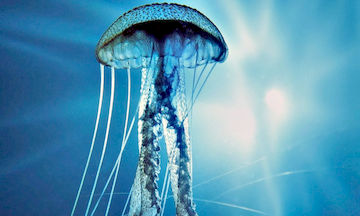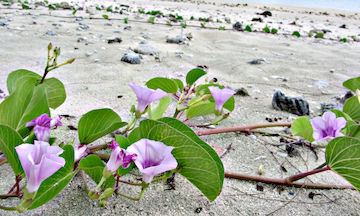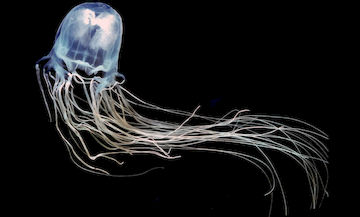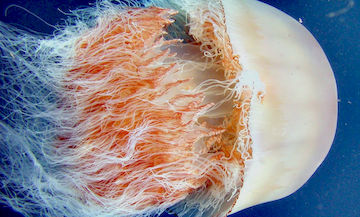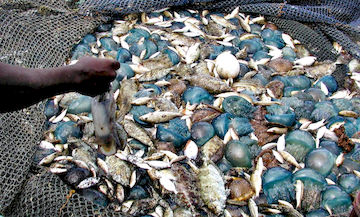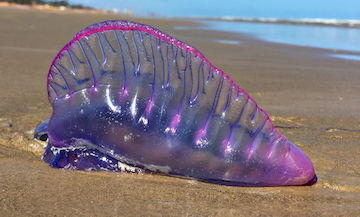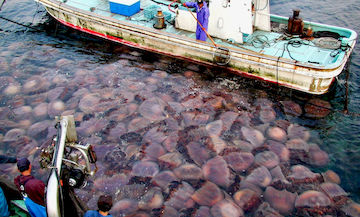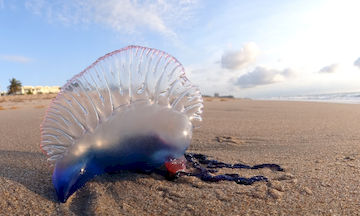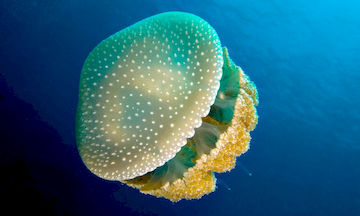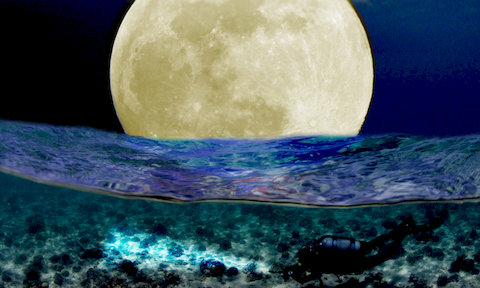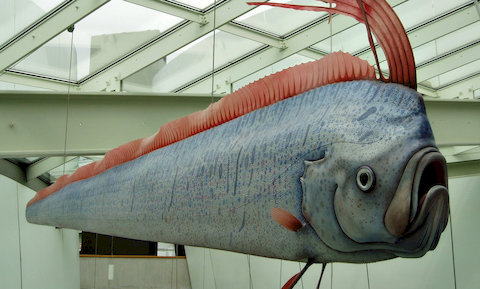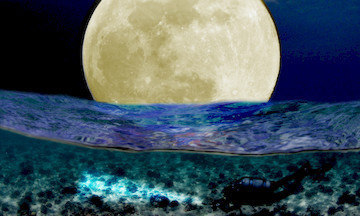Jellyfish and Medusae, All About Jellyfishes
The Jellyfish are a living species considered to be one of the oldest on earth. Jellyfishes are 500 millions years old! But at first let us clarify one question: Is the plural of Jellyfish, jellyfish or jellyfishes? Both writing are correct!
But did you know that if you want to become immortal you need to become a jellyfish? Yes, there is immortal jellyfish out there!
This article is all about jellyfish and medusae! The biggest and largest jellyfish, the most venomous, the smallest jellyfish which is also one of the most dangerous jellyfish, why they become more and more invasive as well as what to do and not to do when you are stung by a jellyfish.
What is a jellyfish?
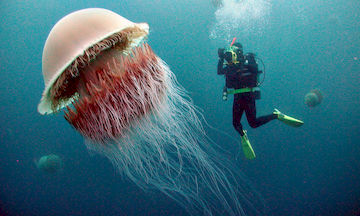 The jellyfish are members of the classification of phylum Cnidaria, which includes the gorgonian, the rocky coral, and the sea anemone. A Jellyfish looks gelatinous and has string like tentacles.
The jellyfish are members of the classification of phylum Cnidaria, which includes the gorgonian, the rocky coral, and the sea anemone. A Jellyfish looks gelatinous and has string like tentacles.
A jellyfish or medusa does not have brain, bones, blood or even a heart. They are composed of 95% water and is made of 3 layers: The first layer is called the epidermis, the second layer is the mesoglea which is elastic and made of jelly-like substance, and the last one is the gastrodermis (the inner layer) which is also the stomach of the jellyfish.
The digestive system of a jellyfish is composed of one opening that serves as its mouth and anus. The digestion happens in the cavity of the bell of a jellyfish which functions as its stomach and intestine.
Jellyfishes have an elementary nervous system (nerve net) allowing a jellyfish to respond to any stimuli. The body of a jellyfish is structured with a radial symmetry making the jellyfish capable of detecting food or danger from all direction. Jellyfish uses its tentacles to sting in reaction to danger or prey.
The dangerous jellyfish
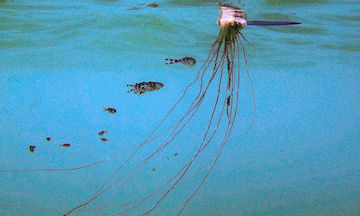 As for now, we have only discovered 2000 species of jellyfishes. Among these species, only 70 are known to possess harmful venom to human. Jellyfish stings varies in each of its species.
As for now, we have only discovered 2000 species of jellyfishes. Among these species, only 70 are known to possess harmful venom to human. Jellyfish stings varies in each of its species.
Jellyfishes have stinging cells that contain a toxin. These cells are made of tiny sacs called cnidocytes. The slightest touch triggers these sacs, and it extends its nematocytes. These nematocytes are harpoon-like organelles that inject the venom to its victim.
Because most of us do not know which species of jellyfish are harmless, when you do encounter one, it would be better to leave the water or move away from it.
Worldwide Jellyfish Invasion
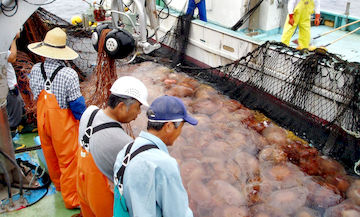 The Jellyfish are proliferating all over the world. This rise in their population has caused different problems in the world.
The Jellyfish are proliferating all over the world. This rise in their population has caused different problems in the world.
For example, In 1982, the invasive comb jellyfish caused a loss of $350 million in the fishing industry in the black sea.
In 2003, a total of 272.15 tonnes (US 300 tons) of jellyfish damaged a desalination plant in Oman causing a 50% decrease in their output.
In 2009, a japanese fishing boat capsized when its crew tried to haul in a net full of jellyfish where each jellyfish weighed around 200 kg (440 lbs).
And those examples cited above are only three of the devastating events caused by the rise of the jellyfish's population. Scientist blames the change in global temperature, but Dr. Jenny Purcell, a marine scientist, noticed that the jellyfish overpopulation starts from the most environmentally damaged part of the earth where human activities took place. So Humans could have caused the rise of their population.
Another explanation is overfishing which decreases the predators and competitors of jellyfish. Human overfishing has made different parts of the ocean more suitable for jellyfishes to live and populate faster.
Immortal jellyfish: Turritopsis dohrnii
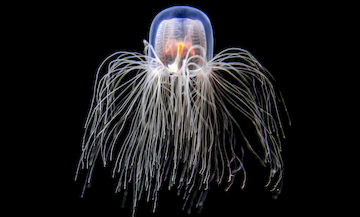 Jellyfish are known to have a very short lifespan. In record, it ranges from hours (for hydromedusaes) to months and up to a year at most for larger jellyfish (2-12 months). But a specie of jellyfish have taken the longevity to another level, the Turritopsis dohrnii is known to be an Immortal Jellyfish.
Jellyfish are known to have a very short lifespan. In record, it ranges from hours (for hydromedusaes) to months and up to a year at most for larger jellyfish (2-12 months). But a specie of jellyfish have taken the longevity to another level, the Turritopsis dohrnii is known to be an Immortal Jellyfish.
The immortal jellyfish is found in the waters of Mediterranean, Japan, and tropical countries. But the proliferation of this jellyfish was unnoticed because of its size of 4.5 mm (0.18 in). This small size is also why there are only a few studies before.
The Turritopsis dohrnii can reverts back to its juvenile polyp stage at any moment of their life. But the immortal jellyfish does not have complete control over this process. It requires certain conditions such as being injured, being in an environment not conducive, or when starved.
We (Scotty's Media Team) really do not know how it looks, as from different websites and online encyclopedias show different contradicting pictures of this famous immortal jellyfish (see our refences at the end) and wikipedia did not help either showing an even more different medusae.
Giant jellyfish: The Huge Lion's Mane Jellyfish
The title of the largest Jellyfish in the world is held by the Lion’s Mane Jellyfish. Its length can even grow up to 36.6 meters (120 ft), a few meters longer than the largest animal, the blue whale which can grow up to 33 meters (108 ft). An individual can have over a thousand tentacles, 1,200 tentacles at most. The number of the tentacles of a lion’s mane jellyfish makes it look like the mane of a lion, hence its name.
The lion’s mane jellyfish can be found in cold waters such as the waters of the Arctic, the northern Atlantic, the northern Pacific, and the waters of Australia and New Zealand. It is because these jellyfish cannot cope up with warmer waters.
Similar to other jellyfish, the lion’s mane jellyfish is capable of reproducing sexually and asexually depending on their stage. During the medusa stage, these jellyfish reproduce sexually, and during the polyp stage, it reproduces asexually. They stay in shallow waters towards the end of their only one year life.
This giant is gentle towards humans. Despite its size, the lion’s mane jellyfish sting can only cause temporary and localized pain. But touching some tentacles and swimming towards a lion’s mane jellyfish in the water is quite different. Due to the size of this jellyfish, the sting can cause panic, although it is not that dangerous.
The Box Jellyfish
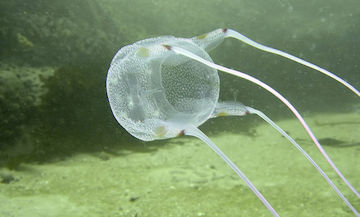 The deadliest jellyfish is the box jellyfish, also known as the box jelly, it is a member of the Cubozoa class. This classification of the jellyfish has even surpassed the venom of the king cobra! It is because the box jellyfish's venom targets the heart, nervous system, and skin cells. In contrast, the king cobra's venom attacks the nervous system but kills only due to respiratory failure.
The deadliest jellyfish is the box jellyfish, also known as the box jelly, it is a member of the Cubozoa class. This classification of the jellyfish has even surpassed the venom of the king cobra! It is because the box jellyfish's venom targets the heart, nervous system, and skin cells. In contrast, the king cobra's venom attacks the nervous system but kills only due to respiratory failure.
The adult stage or medusa form of the box jellyfish is box-like from where its name came. But like other jellyfish, they are composed mostly of water (95% water) with an almost transparent body. An adult box jelly can grow up to twenty centimeters (8 in) along each side, and its tentacles can reach up to 3 meters (10 ft) in length. The box jellyfish has 24 eyes, grouped in clusters of six across its bell. Also it might be the only jellyfish to not drift only, but can go at a speed up to an astonishing 7.5 km/h (4 knots).
What puts the box jellyfish above the other jellyfishes, is its developed nervous system which is more developed than most jellyfish. Their nervous system coordinates their pulsing movements, similar to the crown jellyfish. It has its potent venom stored in thousands of cnidocytes in its tentacles. This venom could kill 60 adults and is used to immobilize its pray or disable predators.
The kingslayer jellyfish: Smallest most dangerous jellyfish
One of the smallest but deadly jellyfish in the world is the common kingslayer, also known as Malo Kingi. The name kingslayer comes from the first and only recorded death due to its venom, Robert King. This unfortunate tourist swam off the Port Douglas, Queensland, Australia and was stung by this tiny jellyfish.
The Malo Kingi is a type of an Irukandji jellyfish or jellyfish that possess similarly potent venom. It is under the same classification as the Box jellyfish. The death of Robert King led the scientific community to study its venom. Other recorded stinging incident of the Malo Kingi caused severe pain and nausea.
The common kingslayer has the typical bell-shaped body which can grow up to 3.1 cm (1.2 in) in diameter. The tentacles have halo-like rings around it and light purple nematocytes. Its opening is frown-shaped with two lensed eyes on its flaps.
The Malo Kingi live only the Australia's waters. They are more commonly found during late summer and early winter.
Portuguese Man of War also known as Blue Bottle Jellyfish
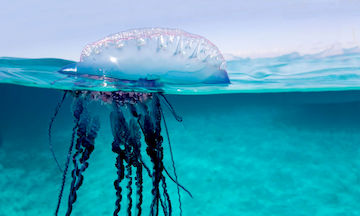 The Portuguese Man o’ war, also known as Man of war or man-o-war, is often mistaken as a jellyfish, in reality it belongs to another classification called Hydrozoa. Hydrozoans are microscopic organisms, were some are solitary and some form a "community".
The Portuguese Man o’ war, also known as Man of war or man-o-war, is often mistaken as a jellyfish, in reality it belongs to another classification called Hydrozoa. Hydrozoans are microscopic organisms, were some are solitary and some form a "community".
The Portuguese Man of war is an example of the latter. It is composed of many micro-organisms clustered into three types, each with specific functions. The 3 types are made of:
- The dactylozooid, responsible of the defense
- The gonozooid, responsible of the reproduction
- The gastrozooid, as their name suggest, they are responsible for feeding the entire organism
The dactylozooids compose the tentacles of the Man O war. It usually reach 10 meters (33ft) but can grow over 30 meters (98 ft), where each tentacle, containing the deadly venom, is used to defend itself or to attack its prey.
The Portuguese Man of war's got its name because of the animal's resemblance to the Portugal's warships called the Man of War. When washed ashore, the appearance of the man o' war, makes kids curious enough to play with it, which is dangerous.
As for the name Blue bottle jellyfish or Bluebottles, it's because of the bluish color of the pneumatophore. The pneumatophore is the bag filled with carbon monoxide, nitrogen, oxygen and argon.
Stingless Jellyfish
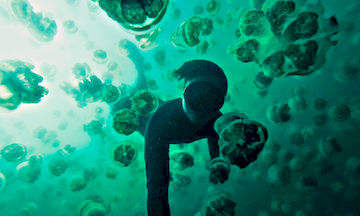 The Philippines is home of the stingless jellyfish in Sohoton, Bucas Grande of Surigao del Norte. The harmless jellyfish is occupying an entire lagoon.
The Philippines is home of the stingless jellyfish in Sohoton, Bucas Grande of Surigao del Norte. The harmless jellyfish is occupying an entire lagoon.
The harmless jellyfishes are actually the moon jellyfish and the golden jellyfish. These species of jellyfish are unique because their stingers are so mild that it is harmless to human beings. This is why people want to experience swimming with them.
The government highly protects this national treasure. To swim with stingless jellyfish, you must go through the standard briefing, of the local government in charge, to learn how to protect those jellyfish. But the time spent during the briefing makes it even more special to swim with it.
Jellyfish as Jelly food
It is uncommon for most countries to eat jellyfish, but in several countries in Asia, people are harvesting jellyfish for food.
Countries such as China, Indonesia, South Korea (possibly North Korea as well), Malaysia, Thailand, and the Philippines have been involved in producing jellyfish. In 2001, Southeast Asian countries had an estimated annual catch at around 169 000 tonnes (186,000 US tons).
One of the leading jellyfish's product is dried jellyfish. It takes about 19 to 37 days to dry it by different means, such as using salt or purveying the jellyfish in dried sheets. But there are many other ways to prepare a jellyfish.
Not all jellyfish are edible or can be processed as food. Edible jellyfish are made from Rhizostomae jellyfish. These jellyfish have no tentacles or any other structure around the bell but have eight oral arms that have mouth-like orifices.
What to do and what to avoid when a jellyfish stings you?
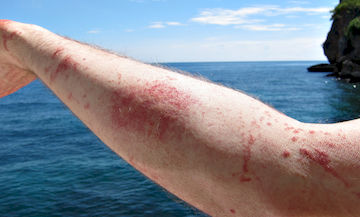 1. Get out of the water. Most jellyfish stings are harmless, but it is difficult to distinguish if the incident is dangerous or not.
1. Get out of the water. Most jellyfish stings are harmless, but it is difficult to distinguish if the incident is dangerous or not.
2. Remove the stingers but do not do it barehanded. The best way to go around it is to use tweezers. If it’s not available, use wet sand to cover the sting and wash/rub it mixed with seawater. But do not put pressure on it because it will also trigger the stingers!
3. Clean the wound with vinegar as vinegar will also neutralize the venom and stop the pain. If you do not have vinegar around you, clean the wound with salt water or seawater as saltwater/seawater will not trigger the cnidocytes.
4. Apply medication. A jellyfish sting will produce rashes or an allergic reaction to the affected area. Using cooling substance such as some lavender essential oil will calm the skin reaction.
5. Seek medical attention. Depending on your situation and if you ever feel like the effects of the sting is still present, go ask your doctor about it.
In some countries, like the Philippines, traditional remedies are used. Filipinos ground leaves of the Lambayong also known as the Beach Morning Glory and apply the sap to the wound.
Note: Never use fresh water, pee, or alcohol in cleaning the affected area. Using freshwater, pee, or alcohol will trigger the stingers.
If ever you can, take note of the type jellyfish that stung you, or at least describe how it looked, it can help your doctor to know what to do for you in case it's getting worse.
Jellyfishes and Jellyfish Researches and References
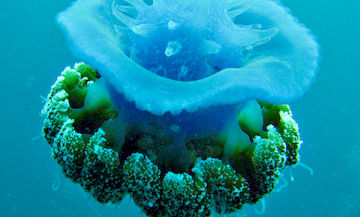 All pictures used for this article are courtesy of
Wikimedia Commons, and Free stock photos.
All pictures used for this article are courtesy of
Wikimedia Commons, and Free stock photos.
If you want to know more about Jellyfish and Medusae, take a look at some of our references below.
- The smallest and deadliest kingslayer
- Facts Jellyfish
- How to catch and cook a jellyfish (Youtube)
- jellyfish are taking over the seas
- Giant jellyfish swarms
- How long do jellyfish live
- Immortal jellyfish
- Wikipedia Turritpsis dohrnii
- Immortal Jellyfish
- NG Immortal jellyfish
- Fact about immortal jellyfish
- Jellyfish More Than 500 Million Years Old
- Wikipedia Lion's Mane Jellyfish
- Box Jellyfish
- Portuguese Man O War
- Lambayong: Beach morning glory
- How many species of jellyfish
- Jellyfish stings treatment
- Jellyfish stings
- How to treat jellyfish stings
- Will urine treat jellyfish stings
Last, but not Least
If you would like to receive interesting content like this in your email Inbox, subscribe to our newsletter.
In addition to our monthly newsletter, we will send you our weekly e-Bulletin with one fascinating topic, like today.
We also want to thank YouTube for the amazing videos on this page.
Thanks for reading, and if you wish, see you next week!
The Research and Media Team at Scotty's.
Disclaimer: The views, ideas, and opinions expressed by the writers of Scotty's Media team do not necessarily reflect or represent the views, ideas, and opinions of the company, Scotty's Action Sports Network, Inc.
More Pictures of jellyfishes
